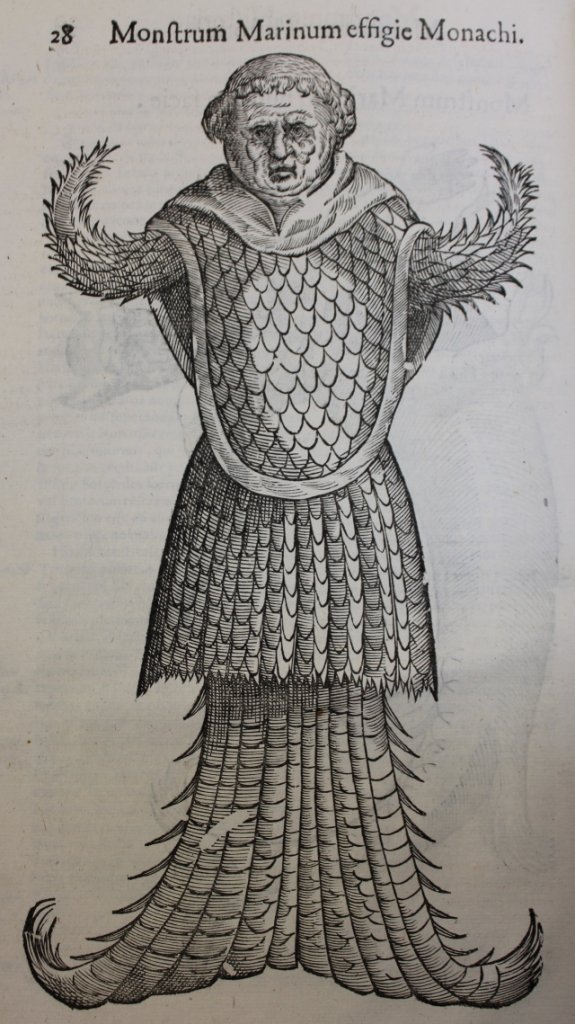
Ridiculous. Amusing. Laughable. These are the first words that came to mind when I saw this image of the sea monster who resembled a monk from 1642. I assumed it to be a Renaissance fantasy imagined by a sailor who had one too many bottles of rum. When researched further however, I found that, while it may not be a realistic depiction of any known creature, it does symbolise a very real endeavour – that of early scientific pursuit.
Strange natural phenomena flooded into Europe from around the world during the Renaissance. This image of the sea monk monster represents the struggle of naturalists to create early scientific methods to process this information and negotiate true stories from the exaggerated or false.
The sea monk monster appeared in several texts from the 1550s and this depiction is from Monstrorum Historia (1642) by Ulysses Aldrovandi. The book contains many spectacular images of so-called ‘monsters’ or rare natural phenomena from the notes of Ulysses Aldrovandi (1522-1605). Aldrovandi was a Bolognese naturalist and a pioneer of early forms of scientific methods. His private museum attracted naturalists and noblemen from around Europe who came to marvel at his collection of plant and animal specimen. He corresponded with naturalists all over Europe with whom he swapped samples and on his death in 1605 he bequeath thousands of objects to the Senate of Bologna in order to open his collection to the public and posthumously publish his notes in multiple volumes.
While one could dismiss the sea monk monster as a mere fisherman’s tale another possibility was devised in 1854 when naturalist Japetus Steenstrup speculated that the sea monk monster was an early depiction of a giant squid (Architeuthis). Steenstrup tracked down various sightings since 1545 when the capture of a monk-like monster was noted in Danish annals. The rarity of sightings of giant squid, especially before modern trawling methods, makes it a strong candidate for the sea-monk as it certainly would have appeared monstrous to unsuspecting sixteenth-century sailors. More recently film crews and fishermen have captured images of spectacular giant squid and some likeness to Aldrovandi’s sea monk monster can be seen. Another ‘monster’from Aldrovandi’s book, the bishop fish, also bears a resemblance to the giant squid.
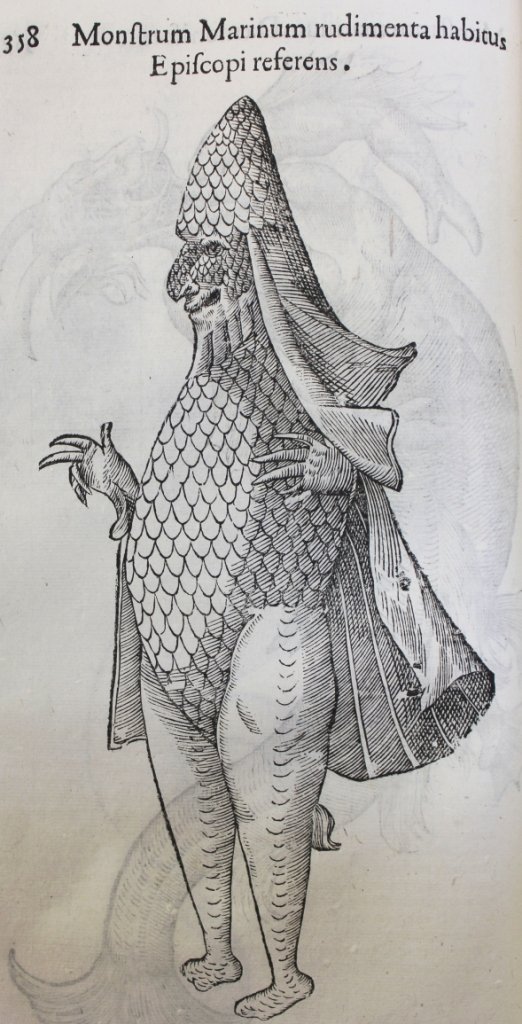
In cases such as the sea monk monster, when Aldrovandi was unable to personally witness the specimen, he informed himself through available publications and information from his network of naturalists whose judgement he trusted. In the case of the sea monk there were several published works by like-minded naturalists he could consult. Even when naturalists strove to achieve reasonable verification of natural phenomena artists often had to create images second hand from incomplete descriptions which resulted in unusual visual depictions. One amusing example of the difficulties artists faced is shown by this seahorse monster included in Aldrovandi’s book.
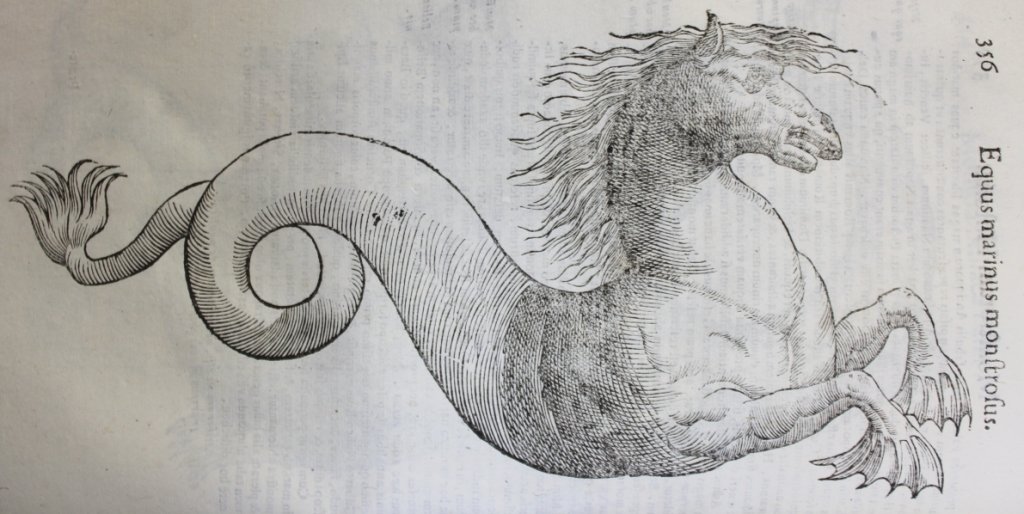
Not all of the ‘monsters’in the book can be matched with real phenomena. Aldrovandi’s faith in ancient Greek and Roman sources led to the inclusion of satyrs. He also relied on medieval bestiaries and reports many cases of half-man half-animal births from around Europe from the previous few centuries. These may seem absurd to us today but he was building upon a pre-existing body of work considered reliable for over a millennium.
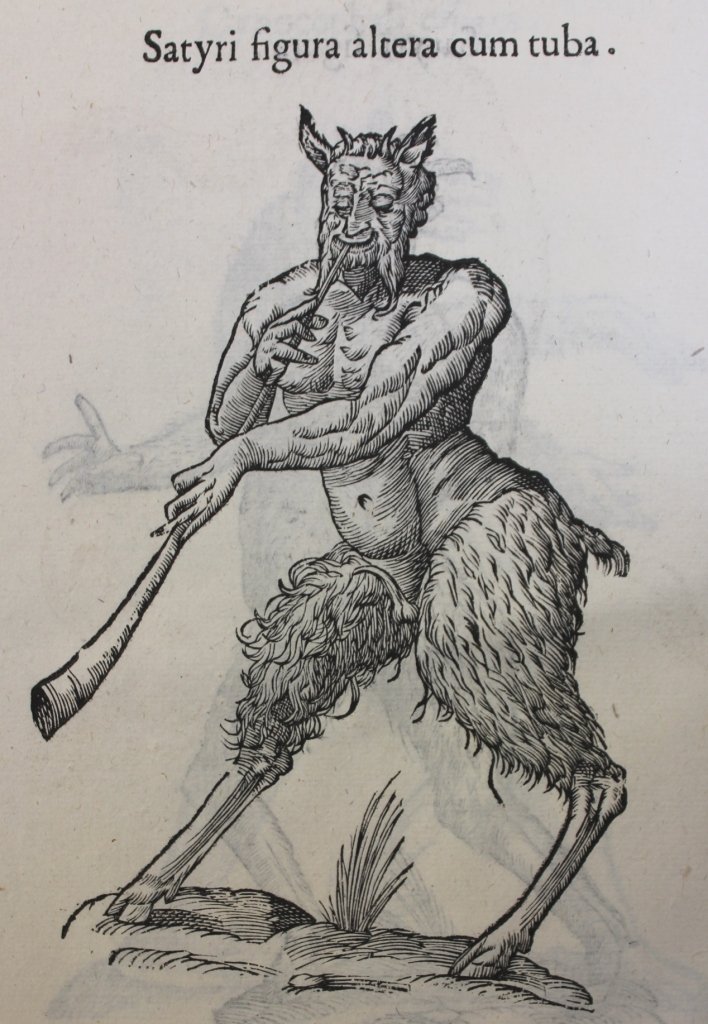
The fantastic are outweighed by real phenomena in his works as a whole however. Famous Renaissance anatomists such as Vesalius outlined ‘normal’ bodies and created strict categories into which Aldrovandi’s ‘monsters’ did not fit. By excluding these ‘monsters’from the accepted ‘norm’, they became intriguing mysteries to be solved. The word monster traditionally meant part human part animal hybrids or anything of unusual size. Aldrovandi’s use of ‘monster’ cannot be interpreted in the modern terms of vampires or werewolves but rather as remarkable natural occurrences. His treatise was an effort to explain rare natural occurrences such as conjoined twins, dwarves, hypertrichosis and rare animals like giant squid which were beyond the daily experience.
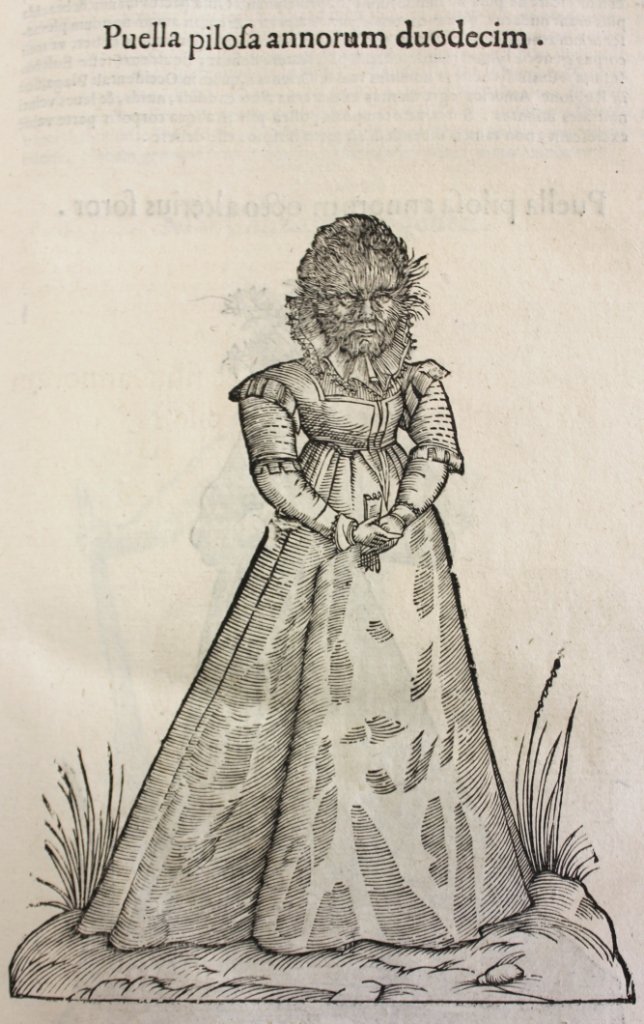
Aldrovandi and other Renaissance naturalists relied partially on ancient and medieval knowledge but also responded to the challenge of new information and new ‘normative’ structures in a proto-scientific way. They laid the foundation for modern scientific knowledge organisation and led the way for others to strengthen scientific methods gradually over the next three centuries.
Scientists today still face similar challenges – how should we process and verify new information about the natural world such as the Ebola virus and the Higgs boson? How do we separate fact from fiction when internet hoaxes are so common? Aldrovandi’s book of monsters doesn’t seem so ridiculous knowing that we continue to struggle with these issues.
All photos courtesy of the trustees of the Edward Worth Library.
Discover the Rare Books of 18th century physician Edward Worth (1676-1733) through the Library’s online exhibitions in history of science and medicine and ‘Book of the Month’articles at edwardworthlibrary Follow us @ facebook
